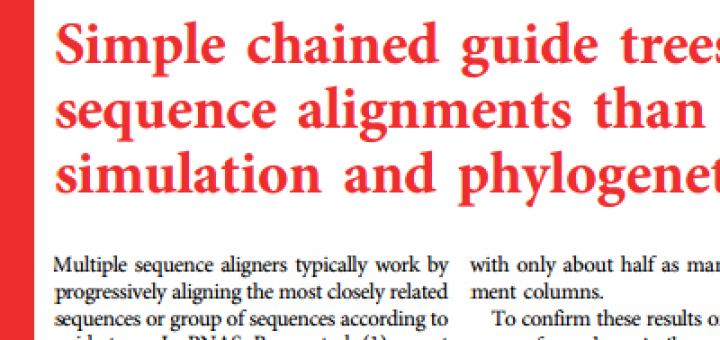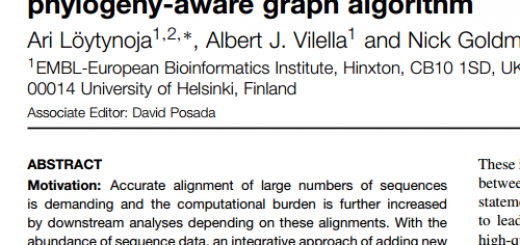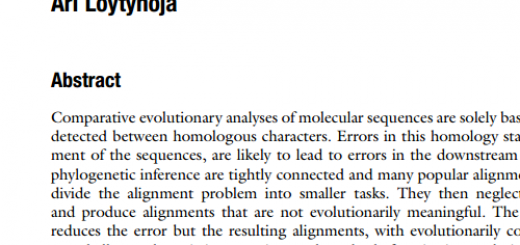Tan, G., Gil, M., Löytynoja, A. P., Goldman, N. and Dessimoz, C. Simple chained guide trees give poorer multiple sequence alignments than inferred trees in simulation and phylogenetic benchmarks. Proc. Natl. Acad. Sci. USA 112, E99–100, 2015.
Multiple sequence aligners typically work by progressively aligning the most closely related sequences or group of sequences according to guide trees. In PNAS, Boyce et al. (1) report that alignments reconstructed using simple chained trees (i.e., comb-like topologies) with random leaf assignment performed better in protein structure-based benchmarks than those reconstructed using phylogenies estimated from the data as guide trees. The authors state that this result could turn decades of research in the field on its head. In light of this statement, it is important to check immediately whether their result holds under evolutionary criteria: recovery of homologous sequence residues and inference of phylogenetic trees from the alignments (2). We have done this and the results are entirely opposed to Boyce et al.’s findings (1).



